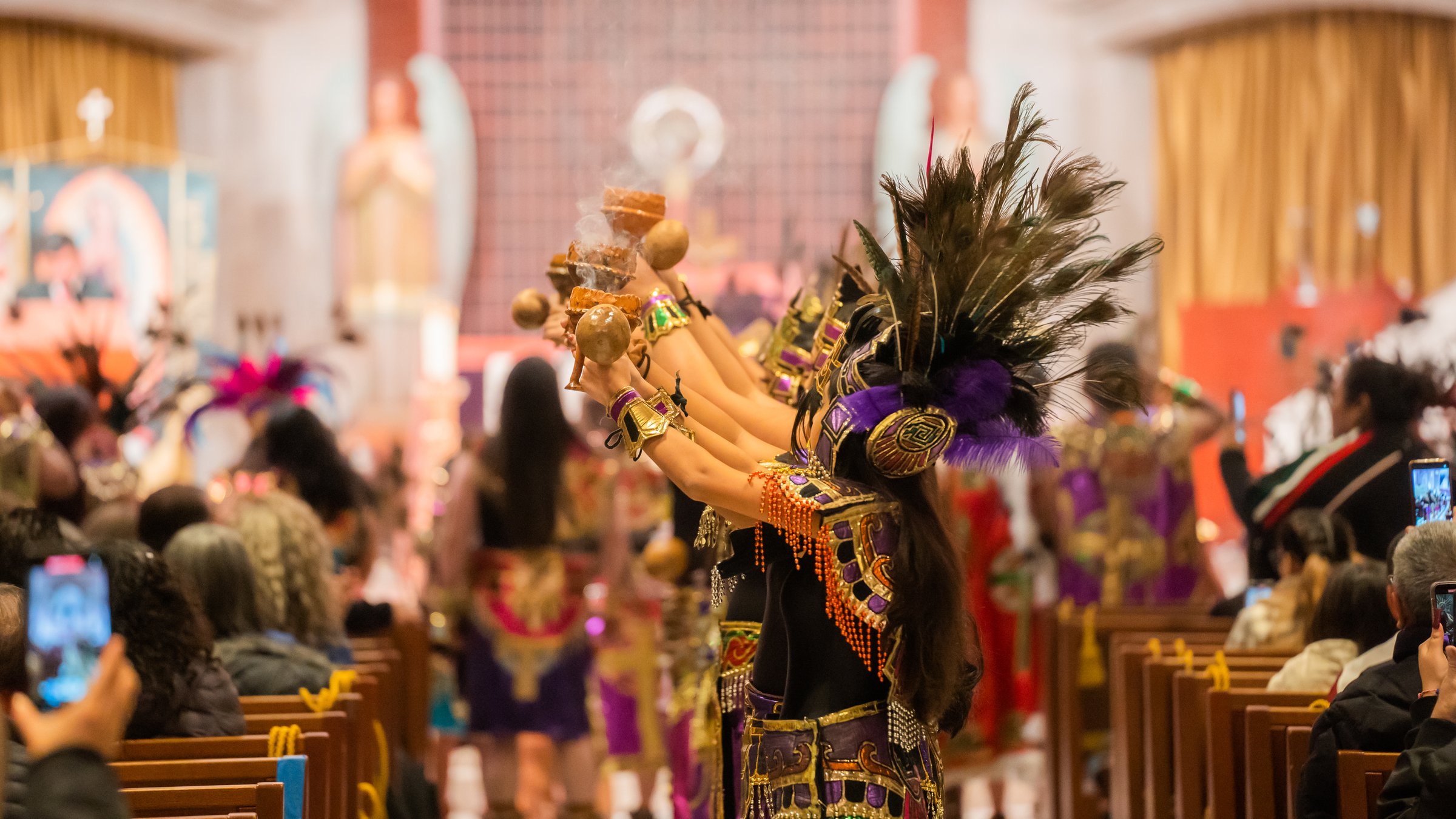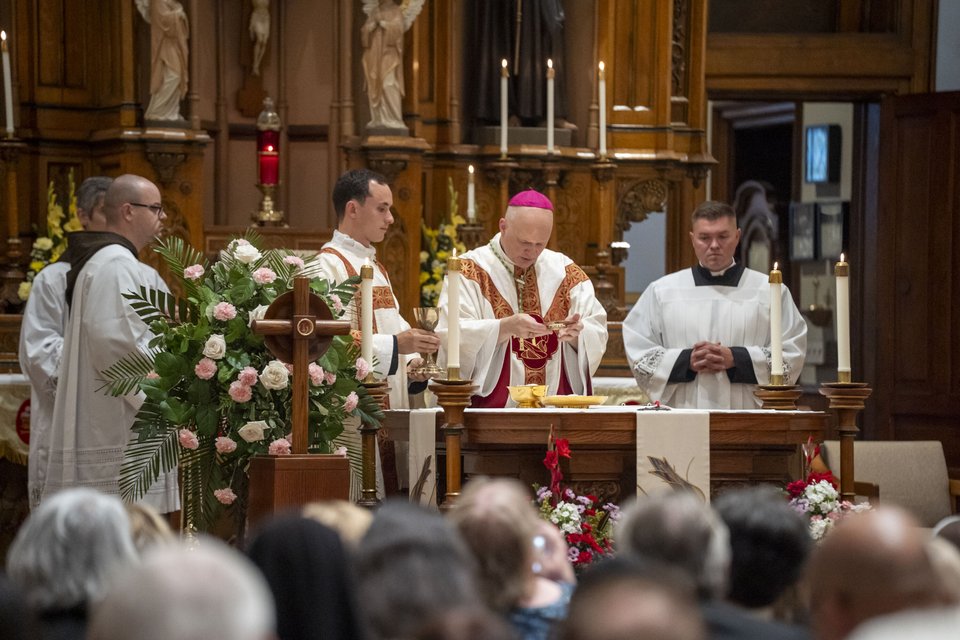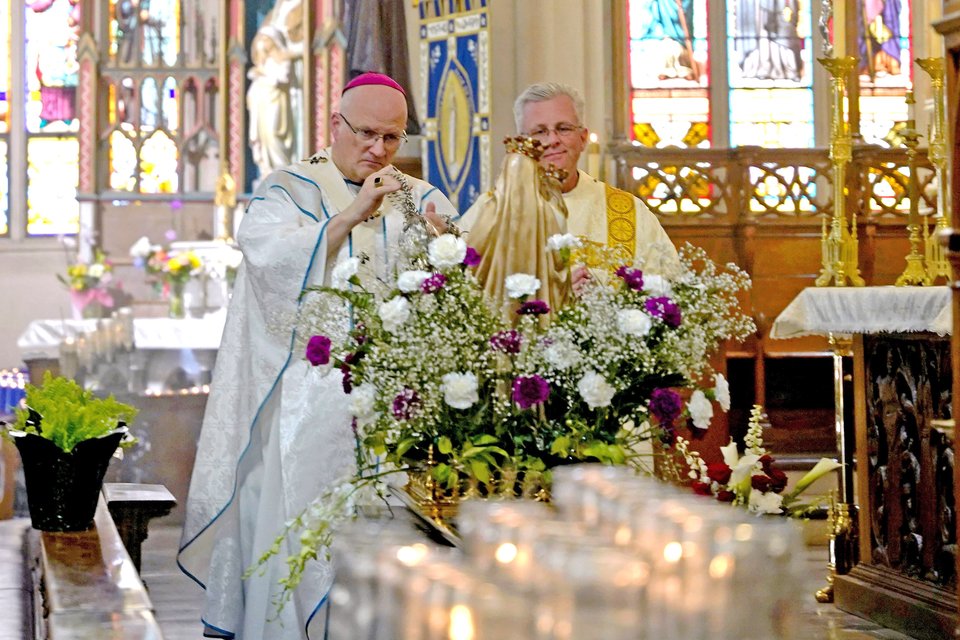Cathedral gears up to host one of the most eagerly anticipated celebrations of the year for Detroit's Spanish-speaking community
This article was originally published in Spanish for Detroit Catholic's sister publication, Detroit Catholic en Español.
DETROIT — On Saturday, Dec. 9, the Cathedral of the Most Blessed Sacrament will commemorate Our Lady of Guadalupe on the feast day of St. Juan Diego. Beyond merely a religious event, however, it will serve as a cultural gathering that unites the entire Hispanic community of the Archdiocese of Detroit.
The celebration will begin with a rosary at 12:30 p.m. and culminate with Mass celebrated by Auxiliary Bishop Arturo Cepeda, with songs and dances in honor of Our Lady of Guadalupe, who appeared to St. Juan Diego in 1531.
Over the years, this festivity has evolved not only as an expression of faith, but as a vibrant manifestation of Mexico's rich cultural heritage.
Preparations for the celebration signify a substantial undertaking that involves the entire Guadalupe community. In an interview with Detroit Catholic en español, Gabriela Sakmar, president of the Detroit-based Federation of Associations of Our Lady of Guadalupe, explained that each parish group within the federation forms a committee to help coordinate the Mass.
From the dances and songs to the banners, liturgy, and post-event cleanup, every detail is carefully planned by the various committees. This collaborative approach enables the Detroit community to actively participate in the preparation, fostering a sense of unity and commitment.
Marcela Lugo, a member of the Cofradía Guadalupana at the Basilica of Ste. Anne, explained that the celebration at the cathedral has evolved, improving each year.
“In addition to meticulous advance planning and heartfelt dedication, it is prepared with the support of all the devoted groups of the Virgin. And most importantly, we have the assistance of the Archdiocese of Detroit," Lugo said. "The bishop and the archbishop always support us a lot. Every year, it is noticeable that the celebration is better organized, and each year, more people gather at the cathedral.”
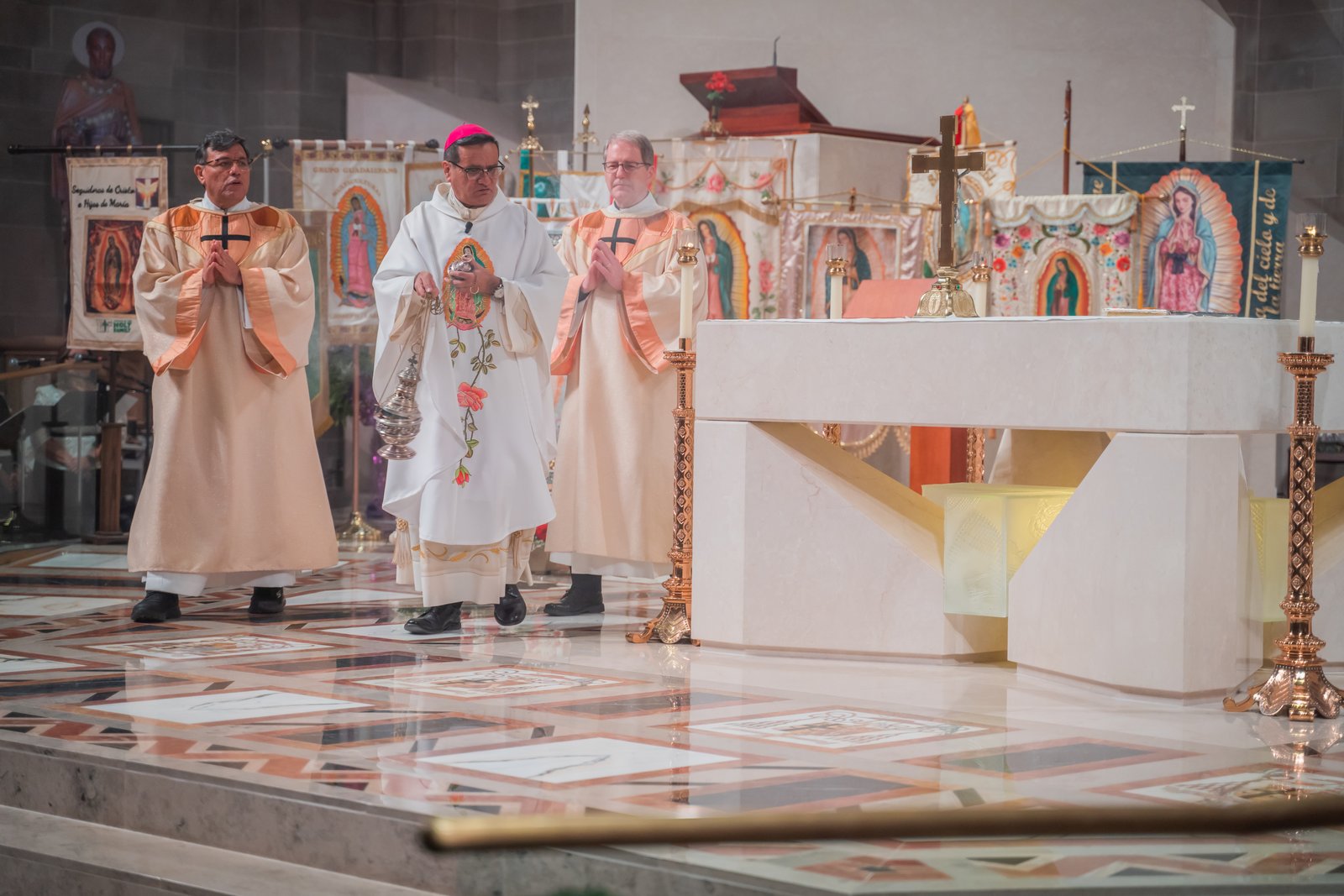
To understand the magnitude of the celebration, it is essential to go back to the history of the Virgin of Guadalupe in Mexico. Her appearance in 1531 to St. Juan Diego, an indigenous man, marked a turning point in both religious history and the cultural identity of Mexico. The Virgin revealed herself as a native woman, adopting indigenous characteristics in her clothing and appearance, thus establishing a direct connection with the indigenous population.
Devotion to the Virgin of Guadalupe has become a fundamental pillar of Mexican identity. Her image, imprinted on St. Juan Diego's tilma, is revered not only as a religious symbol but as an emblem of the fusion between Catholicism and indigenous culture.
This noteworthy occurrence has successfully bridged the realms of faith and science. Rigorous scientific studies on the tilma have consistently affirmed the supernatural aspect of the miracle.
"The Virgin appeared to the natives of Mexico. At that time, they were making very bloody sacrifices to their gods. Although the Spaniards had been actively evangelizing, the indigenous people hadn't fully embraced conversion," Sakmar said. "The apparition of Our Lady of Guadalupe marked a deep and transformative shift."
"This legacy has been transmitted through generations, extending beyond Mexico's borders and deeply embedding itself in Hispanic communities abroad," she added.

The tradition of songs and dances: a connection to the Mexican heritage
Dance plays a distinctive role in this celebration. In the pre-Hispanic era, the Aztecs danced to worship and praise their deities, and this tradition has persisted in the devotion to the Virgin.
"For the Aztecs, dance was a form of prayer. When the Virgin appeared and introduced God, delivering His message, those dances that were once dedicated to the deity were now offered to God Himself," Sakmar explained.
During the cathedral celebration, dancing groups perform representations that honor the Virgin and narrate the story of her apparitions.
These dances aren't just artistic performances; they are expressions of respect and devotion to the Blessed Mother. The connection between dance and spirituality echoes the history of the natives' conversion to Catholicism. Thus, dance becomes a cultural bridge that links the indigenous past with the Catholic faith.
Music, an essential component, also comes to life in Marian chants that not only introduce a festive element but to convey the deep love and respect that the community holds for the Virgin.
"Since I was little, my parents instilled in me that dancing and singing symbolize respect and love for the Virgin," Lugo explained. "The celebration involves Mass, dances and songs. It is a tradition in Mexico to come and sing to the Virgin as an expression of gratitude. A serenade is sung to her, which is a part of the prayer.
"It's about recreating an event that mirrors what occurs in Mexico. For the Hispanic community, it's a way to honor their own culture while being away from their country," Lugo continued. "Not everyone can go to Mexico to see the Virgin. So, this is a way to stay connected to our roots. One feels as if transported to Mexico; it's a beautiful and moving celebration that people never forget."
In this annual celebration, an altar dedicated to the Virgin of Guadalupe is erected. The image, adorned with flowers, comes from the Basilica of Mexico, recreating an atmosphere of the festival experienced at the foot of Cerro del Tepeyac (Tepeyac Hill).
The attire worn by the participants also reflects a deep connection with Mexican traditions. The dances incorporate colorful costumes adorned with feathers, reminiscent of Aztec attire. This choice is not just aesthetic; it serves as a visual reminder of the indigenous roots that the Virgin respected when appearing to St. Juan Diego.
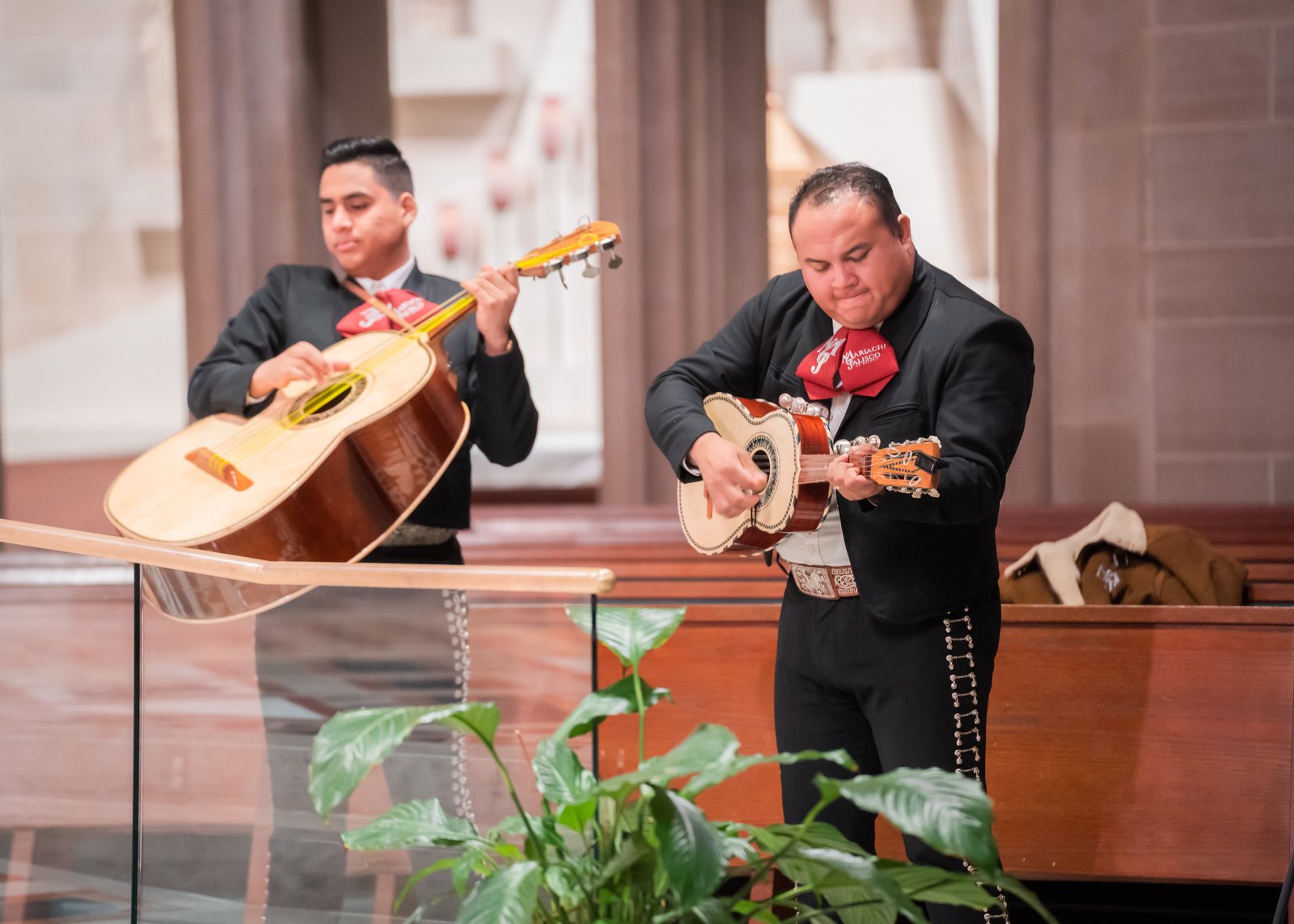
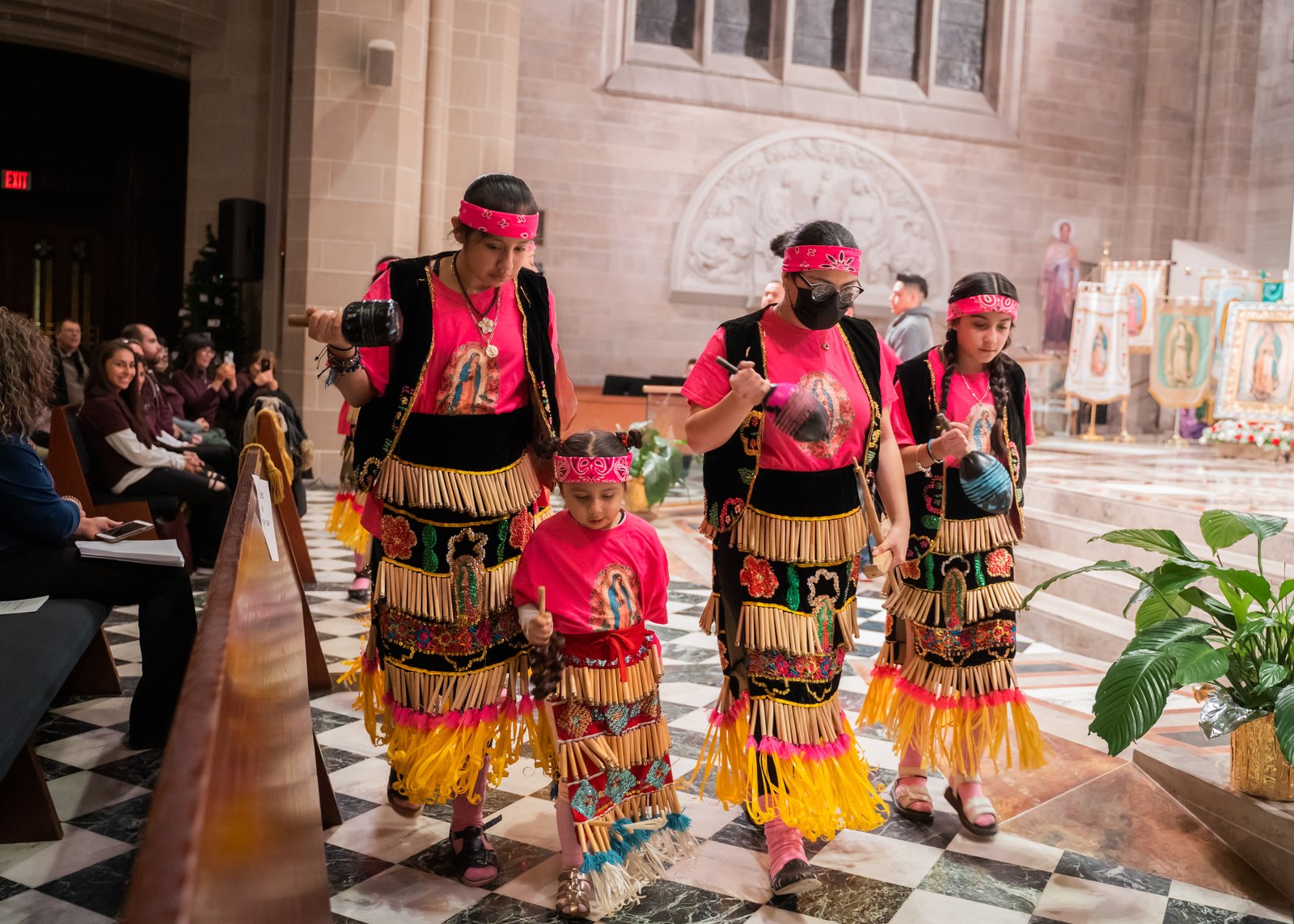
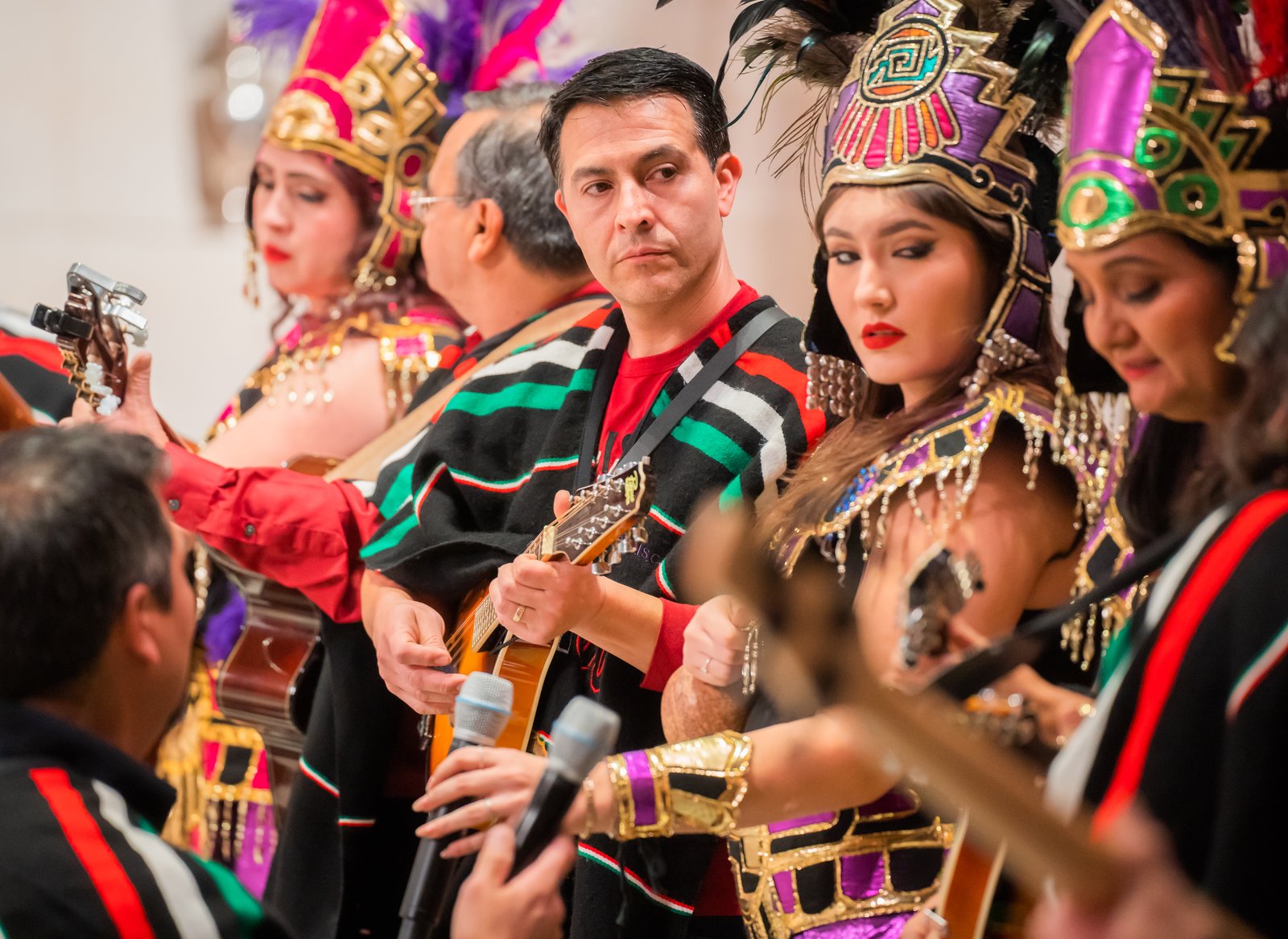
Consecration and welcoming of the non-Hispanic community
As part of the celebration, consecrations to the Virgin of Guadalupe occur, signifying a profound commitment to faith and devotion to the Blessed Mother. Those who consecrate themselves receive medals and diplomas sent from the Basilica of Our Lady of Guadalupe in Mexico.
On the other hand, the participation of the non-Hispanic community in the celebration demonstrates that the Virgin of Guadalupe transcends cultural barriers and attracts people from diverse backgrounds.
"As the president of the federation, Gaby Sakmar consistently made efforts to ensure that the celebration incorporated bilingual elements," Lugo said. "This was done to enable attendees who don't speak Spanish to grasp the essence of what we are discussing, precisely what we are celebrating, and who the Virgin of Guadalupe is. Each year, there's a growing number of non-Hispanic individuals joining this celebration, and that is truly gratifying.
"During the Mass, there is also a small representation of the Virgin's appearance to Juan Diego, as if it were a little theatrical performance," Lugo said. "This way, it's easier to understand how her appearances were and what her message was."
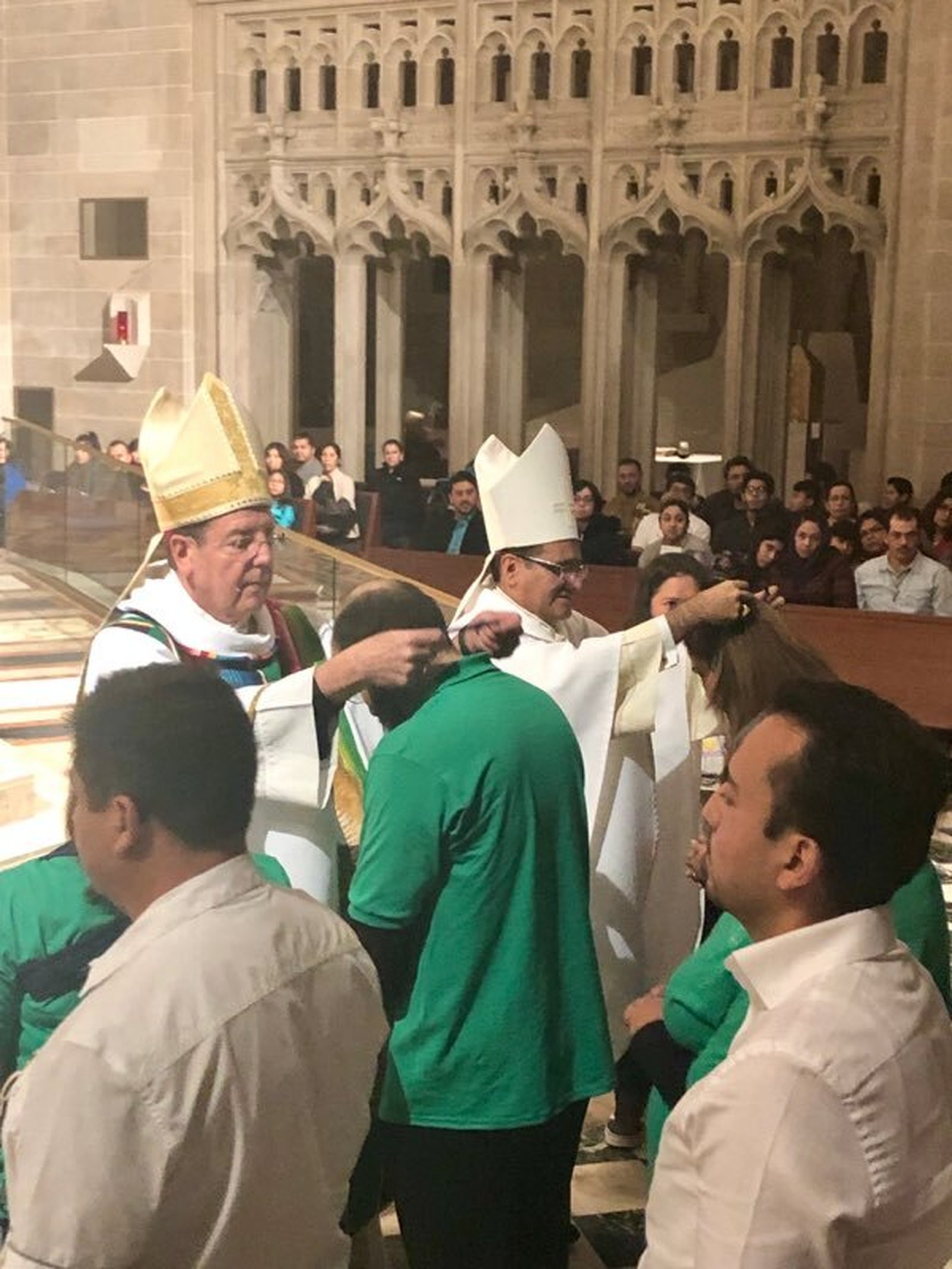
Sakmar encourages anyone to participate in the ceremony at the cathedral, Detroit's mother church.
"While many attend their parish celebrations, there's something different and truly enriching when we all come together as an archdiocese in the cathedral," Sakmar said. "Being part of the Mass as an archdiocese is like living out the Virgin's message. She wanted them to build a little house — essentially, a Church — where everyone could come to share their sorrows and needs, allowing her to present them to God. It's an evangelizing message: she always invites us to approach God through the Church. So when we gather there with many priests, the bishop, and the entire community, it's a clear expression that this is the Church."
Celebration of Our Lady of Guadalupe
The Federation of Associations of Our Lady of Guadalupe in the Archdiocese of Detroit invites you to the Celebration of Our Lady of Guadalupe in commemoration of St. Juan Diego.
Saturday, Dec. 9 | Cathedral of the Most Blessed Sacrament
- 12:30 p.m. Holy Rosary
- 1:00 p.m. Mass presided by the Most Reverend Arturo Cepeda, Auxiliary Bishop of the Archdiocese of Detroit
- After Mass - Songs and dances in honor of Our Lady of Guadalupe
Address: 9844 Woodward Ave, Detroit, MI 48202
Copy Permalink
Feast days

